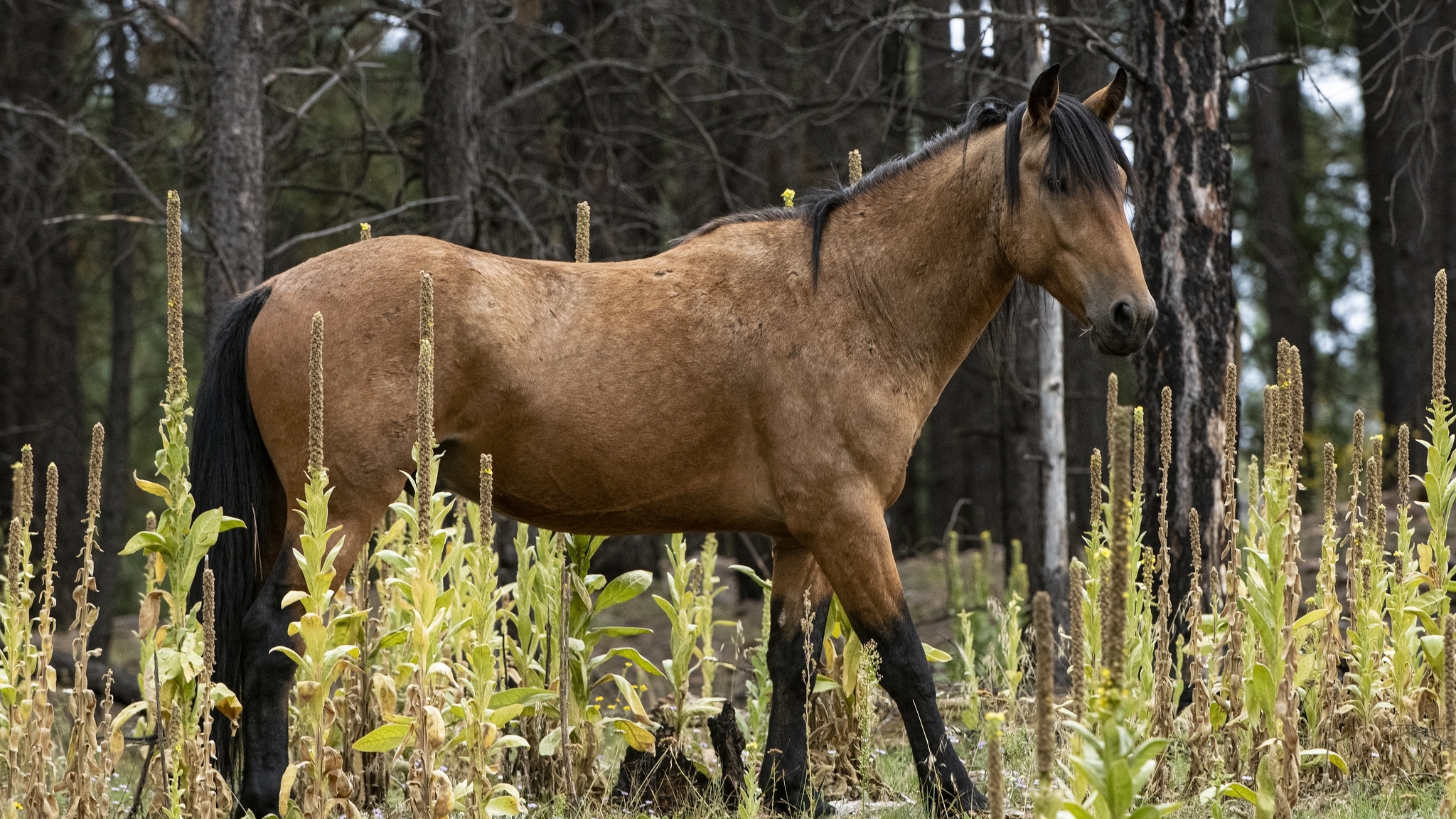Equine Herpesvirus

Equine herpesvirus (EHV), also known as equine rhinopneumonitis, is a family of highly contagious viruses found in horses worldwide. Of the nine known herpesviruses, EHV-1, EHV-3, and EHV-4 pose the highest disease risk to U.S. horses. They do not pose a risk to people.
EHV-1 primarily causes upper respiratory disease and abortions/stillbirths in horses. In some cases, it causes a neurological disease called equine herpes myeloencephalopathy (EHM) that can be fatal. EHV-3 causes a venereal disease called coital exanthema. EHV-4 primarily causes respiratory disease in foals and abortion in mares but can also produce cases of EHM. EHV-infected horses that don't develop EHM generally recover with no side effects.
Clinical signs of EHV may not be specific, and some horses may not show any signs of illness. In clinically affected horses, look for:
- Fever
- Difficulty urinating
- Nasal discharge and cough
- Depression
- Head tilt
- Loss of tail tone
- Stumbling or weakness in the hind limbs that progresses to all limbs
- Down and unable to rise
- Abortion in pregnant mares
EHV-1 and EHV-4 are spread via nose-to-nose contact; contaminated equipment (water and feed buckets, tack and grooming supplies, and shoes); and respiratory secretions within stalls and stables. Aborted fetuses and afterbirth can also contain these viruses. EHV-3 is spread through breeding or contaminated equipment used for breeding. To prevent the disease:
- Vaccinate your horses. Vaccines are available to prevent the forms of EHV that cause respiratory illness and abortion. These vaccines reduce the severity of symptoms and viral shedding. They also reduce the risk of abortions. These vaccines are strongly recommended, especially in breeding operations. None of the vaccines are effective against the neurologic form of the disease (EHM).
- Isolate new or returning horses. Isolate new horses and horses returning to the farm after an event for at least 21 days. Monitor them for signs of disease. Keep pregnant mares with foals at their side in small groups away from new or returning horses.
- Always practice good hygiene and biosecurity. Regularly clean and disinfect all water/feed buckets, mucking equipment, tack, and any other equipment. Do not share or borrow tack or equipment at shows, events, or boarding facilities.
In most cases, treatment consists of supportive care, which may include intravenous fluids and anti-inflammatory medicines to reduce fever. In more severe neurologic cases, treatment may include hospitalization with more intensive veterinary care.
Report Signs of Animal Disease
Producers or owners who suspect an animal disease should contact their veterinarian to evaluate the animal or herd. Find an accredited veterinarian.
Animal health professionals (veterinarians; diagnostic laboratories; public health, zoo, or wildlife personnel; and others) report diagnosed or suspected cases of nationally listed reportable animal diseases to APHIS Area Veterinarians in Charge and to the State animal health official as applicable under State reporting regulations.
Controlling Equine Herpesvirus
The Equine Herpesvirus Myeloencephalopathy (EHM) Incident Guidelines for State Animal Health Officials (815.11 KB) provide science- and field experience-based disease control recommendations to consider during an EHM incident.
- Equine Herpesvirus Resources (American Association of Equine Practitioners)
- Equine Rhinopneumontis (Infection With Equid Herpesvirus-1 and -4) (World Organisation for Animal Health)

